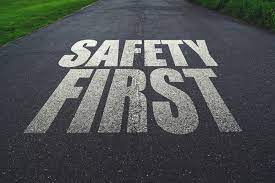Our Top 6 Tips For Truck Driving Safety to Keep You On Top Of Your Game
If you’re new to driving a heavy-duty truck, you are freshly aware of the critical importance of truck driving safety. If you’re a seasoned road veteran, you’re even more aware of what can go wrong. But it’s easy to get into a routine and inadvertently overlook some detail that could pose a safety threat. So with all drivers in mind, here are some reminders about truck driving safety that can keep you and your rig rolling along in good health.
-
Manage your visibility
 Yes, other motorists are supposed to be watching you. And they’re supposed to know you have blind spots and require more room to change lanes and stop. But they forget. So you have to be doubly vigilant while on the move. Continuously monitor the lane(s) alongside your cab and trailer to check for smaller vehicles. Remember there could be a car “drafting” you in the rear, not visible in your mirrors. Leave adequate space to maneuver in front. And always signal for several blinks before changing lanes.
Yes, other motorists are supposed to be watching you. And they’re supposed to know you have blind spots and require more room to change lanes and stop. But they forget. So you have to be doubly vigilant while on the move. Continuously monitor the lane(s) alongside your cab and trailer to check for smaller vehicles. Remember there could be a car “drafting” you in the rear, not visible in your mirrors. Leave adequate space to maneuver in front. And always signal for several blinks before changing lanes.
-
Watch your load
Depending on the state(s) you drive in and your type of truck and trailer, there is a limit to how much weight you can transport. These rules are supposed to limit wear and tear on our nation’s roadways as well as protect trucks, drivers and loads. Be sure you know how to properly measure your weight and how transportation law enforcement personnel monitor you. The last thing you want is a hefty fine.
Even if you’re well within your weight limit, an unbalanced load can spell trouble when you’re underway. If your trailer is less than full, try to keep weight over your axles and evenly distributed front-to-back and side-to-side. Your tires will last longer. If you’re pulling an open flatbed trailer, stacking wider and lower will reduce drag. You’ll get better mileage.
-
Respect bad weather
Rain, snow, ice and wind can wreak havoc on truck driving safety. It’s harder to see the road and other vehicles, it takes longer to stop and gusty wind can push your trailer. It’s a recipe for disaster. If you’re headed into bad weather, take a few minutes to refresh yourself on safety-first driving techniques as well as emergency procedures you’ll need if something goes wrong.
Always check the weather report for your destination and key locations along the way, because when it comes to weather things can change quickly. And watch your speed, because bad weather is a factor in 25% of truck speeding accidents. Experts suggest slowing by 30% for rain, 50% for snow or ice. If other semi drivers are pulling off to wait it out, take the hint and do that yourself.
-
Speaking of speed . . .
Exceeding the speed limit puts you at risk for an expensive ticket and serious black mark (or worse) on your CDL. Excessive speed is dangerous, especially in work zones where travel paths can be vague, space tight and workers present. In fact, large trucks are a factor in about a third of all fatal work zone accidents.
Speeding on curves or exit/entrance ramps can cause tip-overs. Sometimes even the posted speed limit is too fast for big rigs to safely maneuver and slow down in time. Of course you want to make deliveries on schedule, but that’s not worth putting your load or human life at risk.
-
Maintain your equipment
 Truck driving safety starts before you ever start the engine. Never skimp on your daily walk-around inspection. Check your mirrors, horn and all fluid levels. Look for signs of undue wear and tear. Make sure your lights and brakes are working properly. Always adhere to your truck’s service and preventive maintenance schedules. And if you see something amiss in between times, get it checked out immediately.
Truck driving safety starts before you ever start the engine. Never skimp on your daily walk-around inspection. Check your mirrors, horn and all fluid levels. Look for signs of undue wear and tear. Make sure your lights and brakes are working properly. Always adhere to your truck’s service and preventive maintenance schedules. And if you see something amiss in between times, get it checked out immediately.
-
Maintain yourself
Truck drivers do too much sitting. You can’t avoid that, but be aware that extended sitting increases your chances of heart disease, diabetes and circulatory disorders. Healthy eating, drinking plenty of water, stopping periodically for quick exercise breaks and getting enough sleep all contribute to truck driving safety.
